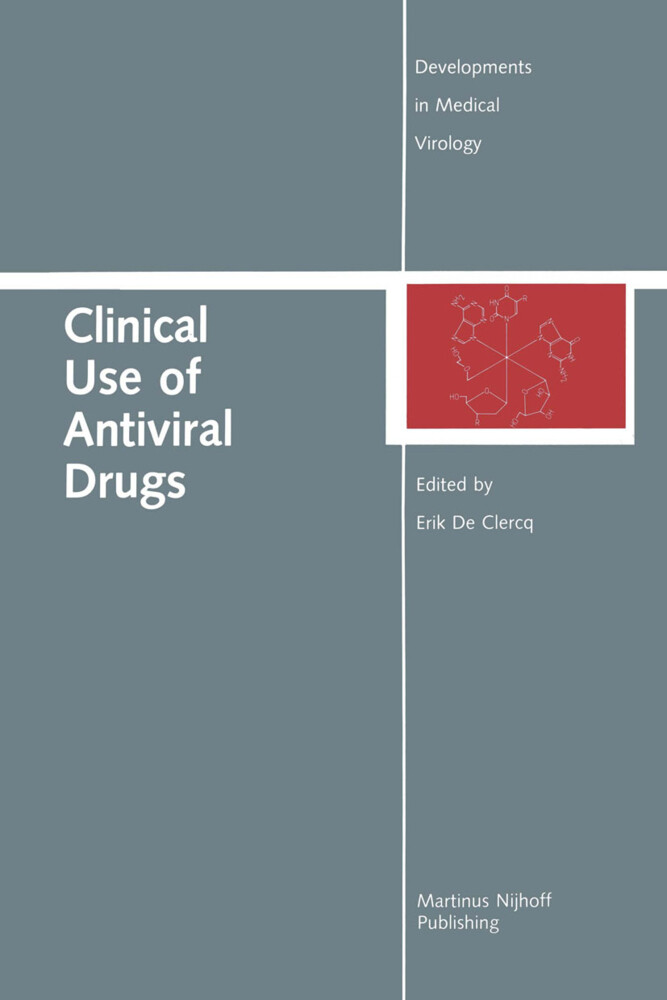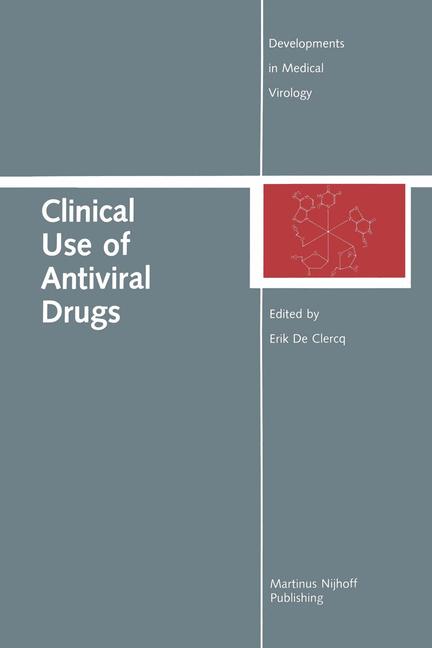
Zustellung: Mi, 15.01. - Fr, 17.01.
Versand in 2 Tagen
VersandkostenfreiBestellen & in Filiale abholen:
Antiviral chemotherapy has come of age, and, after an initial slow pro gress, the development of new antiviral agents has proceeded at a more rapid pace and the perspectives for their clinical use have increased considerably. Now, 25 years after the first antiviral assay (idoxuridine) was introduced in the clinic, it is fitting to commemorate the beginning of the antivirals' era. In its introductory chapter B.E. Juel-Jensen touches on what may be con sidered as five of the most fundamental requirements of an antiviral drug : efficacy, relative non-toxicity, easy solubility, ready availability and rea sonable cost. Surely, the antiviral drugs that have so far been used in the clinic could still be improved upon as one or more of these five essential demands are concerned. How is all began is narrated by W.H. Prusoff. The first antiviral drugs to be used in humans were methisazone and idoxuridine, the former, which is now of archival interest, in the prevention of smallpox, the latter, which was approved for clinical use in the United States in 1962, for the topical treatment of herpetic keratitis. In terms of potency, also because of solubility reasons, idoxuridine has been superseded by trifluridine in the topical treatment of herpes simplex epithelial keratitis. H.E. Kaufman did not find trifluridine or acyclovir ef fective in the treatment of deep stromal keratitis or iritis and he reckons that other antiviral drugs (i.e. bromovinyldeoxyuridine) would not be effec tive either.
Inhaltsverzeichnis
1 Clinical Use of Antiviral Drugs. - 2 Idoxuridine or How It All Began. - 3 The Treatment of Herpetic Eye Infections with Trifluridine and Other Antivirals. - 4 Treatment (Bromovinyldeoxyuridine) of Herpetic Eye Infections. - 5 Diagnosis and Treatment of Herpes Simplex Encephalitis. - 6 Treatment of Herpes Simplex Labialis. - 7 Treatment of Herpes Genitalis. - 8 Treatment of Herpes Simplex Virus Infections in Immunosuppressed Patients. - 9 Antiviral Therapy of Varicella-Zoster Virus Infections. - 10 Treatment (Bromovinyldeoxyuridine) of Varicella-Zoster Virus Infections. - 11 Therapy and Prevention of Cytomegalovirus Infections. - 12 The Prophylaxis of Herpes Group Infections in Patients with Haematological Malignancy. - 13 Resistance of Herpes Viruses to Nucleoside Analogues Mechanisms and Clinical Importance. - 14 Clinical Use of Foscarnet (Phosphonoformate). - 15 Prophylaxis and Treatment of Rhinovirus Infections. - 16 Rimantadine and Amantadine in the Prophylaxis and Therapy of Influenza A. - 17 Ribavirin Aerosol Treatment of Influenza, Respiratory Syncytial and Parainfluenza Virus Infections of Man. - 18 Antiviral Therapy of Highly Pathogenic Viral Diseases. - 19 Perspectives in the Use of Antiviral Agents for Prevention and Treatment of Respiratory Virus Infections. - 20 Perspectives for the Treatment of Gastrointestinal Tract Virus Infections. - 21 Principles of Antiretroviral Therapy for AIDS and Related Diseases. - 22 Promises to Keep: Clinical Use of Antiviral Drugs.
Produktdetails
Erscheinungsdatum
09. Februar 2012
Sprache
englisch
Auflage
Softcover reprint of the original 1st ed. 1988
Seitenanzahl
436
Reihe
Developments in Medical Virology
Herausgegeben von
Erik De Clercq
Verlag/Hersteller
Produktart
kartoniert
Abbildungen
XVIII, 414 p.
Gewicht
657 g
Größe (L/B/H)
235/155/24 mm
Sonstiges
Paperback
ISBN
9781461289661
Entdecken Sie mehr
Bewertungen
0 Bewertungen
Es wurden noch keine Bewertungen abgegeben. Schreiben Sie die erste Bewertung zu "Clinical Use of Antiviral Drugs" und helfen Sie damit anderen bei der Kaufentscheidung.











